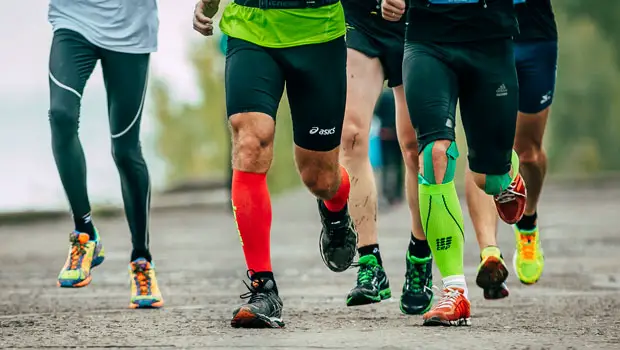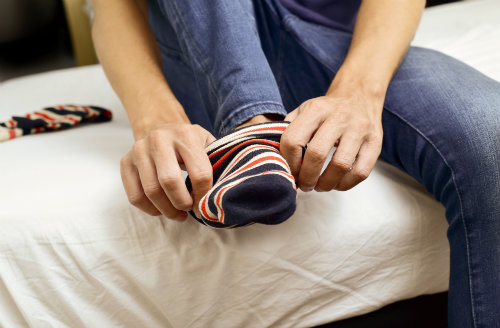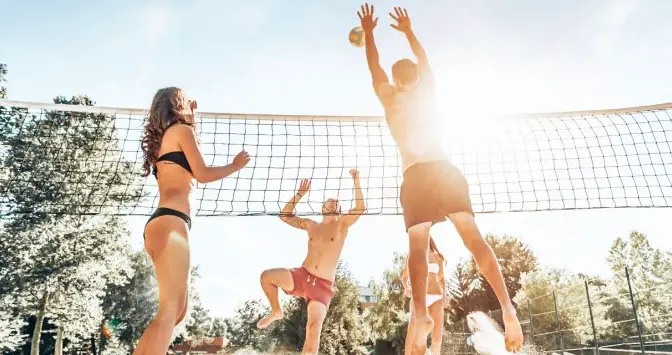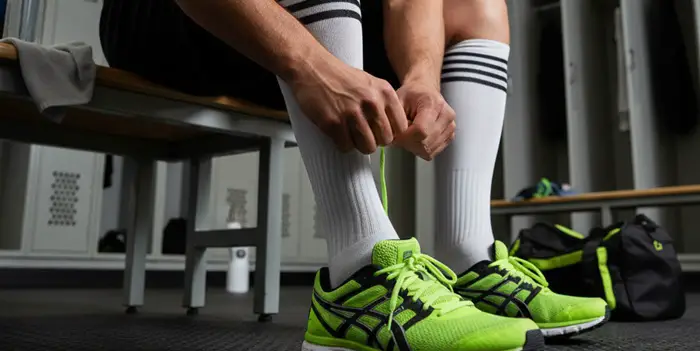
If you’re a regular runner, you already know the difference a good pair of socks can make.
They’re not just something you slip on before lacing up—running socks protect your feet, keep blisters away, manage sweat, and add that little bit of comfort that keeps you going mile after mile.
But here’s the thing: even the most trusted pair won’t last forever. Over time, the cushioning flattens out, the fabric thins, and the fit just isn’t the same.
Think about it—your socks take on the same miles, sweat, and pounding as your running shoes, yet most of us only pay attention to our shoes when it comes to wear and tear.
So, how long do running socks really last? And when should you stop holding onto that “favourite pair” and finally replace them?
Let’s break it down so you know exactly when it’s time to let go and invest in fresh socks for happier, healthier runs.
How Long Do Running Socks Really Last?
Running socks aren’t built to last forever, but their lifespan is usually more predictable than you think.
On average, a pair of cotton socks can serve you well for around 6–12 months of regular use or roughly 300–500 miles on the road or trail.
After that, you’ll likely notice that the cushioning feels flat, the fit is looser, it’s prone to holes, and the fabric doesn’t protect your feet the way it once did.
Of course, not every runner will wear out socks at the same pace. The durability depends heavily on factors like the fabric quality, how often you run, how you wash them, and even your foot health.
For instance, Merino wool socks you use in winter can last for much longer than cotton socks.
And also high-mileage runners or those who put in sweaty summer miles may go through socks faster than someone who runs twice a week in cooler conditions.
It’s also worth noting that brands vary in what they promise—some claim their socks should last up to a year if worn sparingly, while others back their products with multi-year warranties or even lifetime guarantees.
Socks Longevity Chart Based on Materials
| Material | Average Lifespan | Best Features for Runners |
|---|---|---|
| Merino Wool | 2–4 years | Odor-resistant, moisture-wicking, works in hot & cold weather |
| Cotton | 6–12 months | Soft, breathable, comfortable for daily wear |
| Nylon Blends | 1.5–3 years | Very strong, reduces tearing, great for high-friction runs |
| Polyester / Coolmax | 2–4 years | High moisture-wicking, fast-drying, lightweight |
| Acrylic Blends | 1–2 years | Soft, warm, budget-friendly, but pills faster |
| Elastane (Spandex) Add-In | 1–3 years | Maintains fit & compression; used as supporting fiber |
| Bamboo Blends | 1–2 years | Breathable, soft, but not ideal for high-friction running |
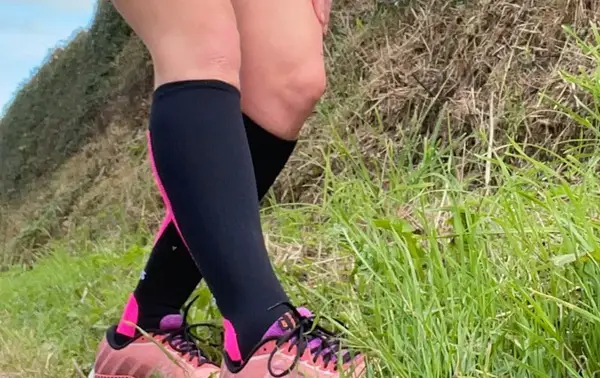
Can You Measure the Lifespan of Your Old Socks?
The truth is, there’s no universal formula for how long your socks will last—every pair is different. The fabric, fit, and even how you treat them all play a huge role in their longevity.
While mileage charts and brand promises are useful, your habits matter just as much.
Here are the key factors that decide whether your running socks serve you for a few months or a couple of years—and what you can do to make them last longer.
1. How You Wear Them
Fit is everything. Socks that are too tight overstretch and lose elasticity quickly, while those that are too loose bunch up inside your shoes, creating friction that thins the fabric.
The right fit should hug your feet without slipping or squeezing. And don’t overlook the basics—keeping your toenails trimmed goes a long way in preventing snags and holes.
2. How You Wash Them
Washing can make or break a sock’s lifespan. Because running socks are made with delicate fibers, they respond best to gentle care.
Hand-washing is ideal, but if you prefer a machine, turn them inside out and use a mild cycle.
Skip the dryer and never iron them—high heat and constant friction weaken the fibers far faster than you think.
3. Where You Wear Them
Believe it or not, walking around the house in socks is one of the quickest ways to wear them down.
Even soft carpets create friction, while rough floors or unpolished wood can poke tiny holes.
Reserve your socks for running (or at least for use inside shoes), and they’ll stay in better shape.
For sports or high-sweat activities, synthetic blends usually hold up better than cotton, making them a smarter choice for longevity.
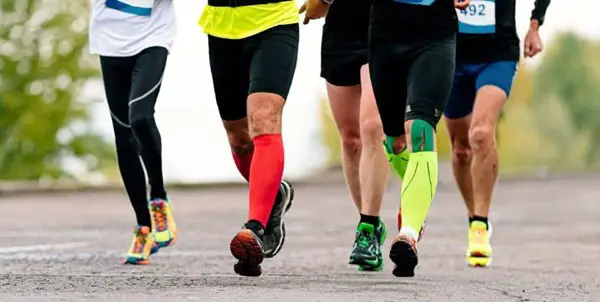
Signs You Should Be Retiring Your Old Athletic Socks
No matter how much you love a pair of socks, there comes a time when holding on does more harm than good.
Worn-out socks don’t just look shabby—they can affect comfort, performance, and even your foot health.
If you notice any of these signs, it’s your cue to let them go and treat your feet to a fresh pair:
- Indentation marks on your legs – Overstretched or worn elastic can dig into your skin, leaving uncomfortable marks.
- Discomfort during workouts – If you start feeling pain or irritation, especially when your feet sweat during training, it’s likely because your socks aren’t giving the support they once did.
- Thinning fabric or visible holes – Whether it’s around the toes, heel, or ankle, thinning spots mean your socks can no longer cushion impact properly.
- Elastic has given out – Constant slipping or sagging can distract you mid-run or workout, pulling focus away from your training.
- Loss of cushioning – When the bottoms of your socks wear down, the reduced padding increases the risk of blisters and other foot injuries.
Think of it this way: replacing old socks isn’t just about comfort—it’s about protecting your feet and ensuring every run or workout feels as good as it should.
When Should You Throw Away Your Old Performance Socks?
Once your socks have worn out, you should throw them right away before they cause more harm than good. Do not overuse your sport socks ever!
When buying a new pair, don’t just pick up any socks. Instead, you should always try to opt for a few pairs of quality socks with features that provide maximum comfort.
For instance, if you are particularly looking for socks that are meant for relieving the swelling in your legs and calves you can go for compression socks.
But if you are in need of just a pair of causal no-show or low-cut socks, you can go with ankle socks.
Important features such as flat toe seam, padding, cushioning, arch band support, a Y-heel design, etc., are also worth considering when you are buying a pair of new socks.
No matter what situation you are in, you should wear a sock that is good at wicking and absorption.
Go for breathable socks which keep humidity away from your skin and keep your feet safe and dry even during hot and humid weather.
Pick up the right set of socks for your feet and give them perfect comfort until you let them retire.
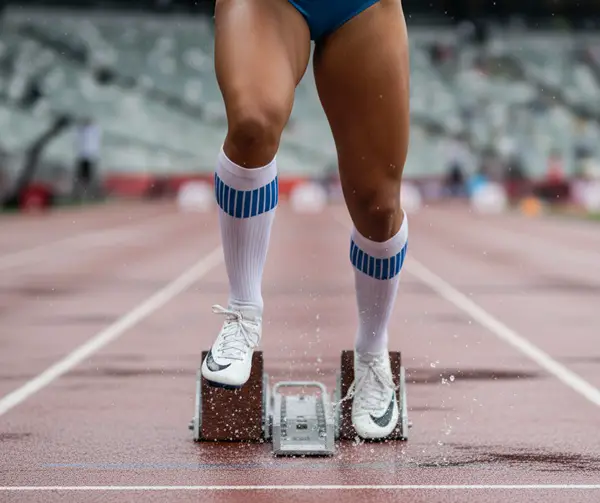
A Few Clever Tips and Ideas to Make Your Sport Socks to Last Longer
I’ve lost count of how many socks I’ve ruined just because I didn’t take care of them properly.
At first, I thought—“They’re just socks, right? I’ll buy another pair.”
But after investing in some good trainer socks and a couple of reliable marathon socks, I realized a little care goes a long way.
Not only do they last longer, but my runs also feel so much better when I’m not dealing with thin fabric or socks that keep sliding down.
Here are a few simple habits I’ve picked up that you might find useful too:
1. Fold and Store Them Properly
Ankle socks are tiny troublemakers—they disappear faster than you can imagine. I started folding them right away after laundry, and it’s made life so much easier.
- Tuck method – Slip one sock into the other so the pair never gets separated.
- Flip method – Stack them, fold in half, and flip from the opening. Quick, neat, and saves the hunt for the missing sock.
2. Choose the Right Fit
I once made the mistake of buying socks a size too big. Let’s just say half my run was spent adjusting and pulling them up.
Too tight, and they overstretch. Too loose, and they bunch up.
The sweet spot is a perfect fit that feels snug but not suffocating—especially important with trainer socks.
3. Stop the Slip
Few things are as annoying as socks sliding down mid-run. If you’ve been there, you know the frustration. I found that socks with good elastic and a Y-shaped heel stay put far better.
Now I don’t even think about my socks once I start moving—exactly how it should be.
4. Quality Over Quantity
Yes, cheap socks are tempting. I used to grab a bunch of no show socks from the local store, only to watch them thin out in weeks.
Once I switched to performance socks (my marathon socks are my favorite), I could feel the difference instantly—better cushioning, less friction, and they’ve survived countless washes. Totally worth the investment.
5. Gentle Care Pays Off
Here’s something I wish I had learned earlier: your washing habits matter.
I now turn my socks inside out before tossing them in the wash, use mild detergent, and air-dry whenever possible.
It takes a little extra effort, but my socks last so much longer—and they feel fresher too.
The Conclusion
Running socks may seem like a small piece of gear, but they play a huge role in keeping your feet comfortable, protected, and ready for every run.
While there’s no exact formula for how long they last, paying attention to fit, fabric quality, and signs of wear will ensure you’re never caught off guard by thinning material or slipping socks.
Remember to replace them the moment they lose support or start showing damage.
With a little care, the right fit, and a focus on quality—whether it’s your trusted trainer socks or high-performance marathon socks—you can keep your feet happy, reduce the risk of blisters, and get the most miles out of every pair.
People searched for:- how long do socks last
- slepta88

